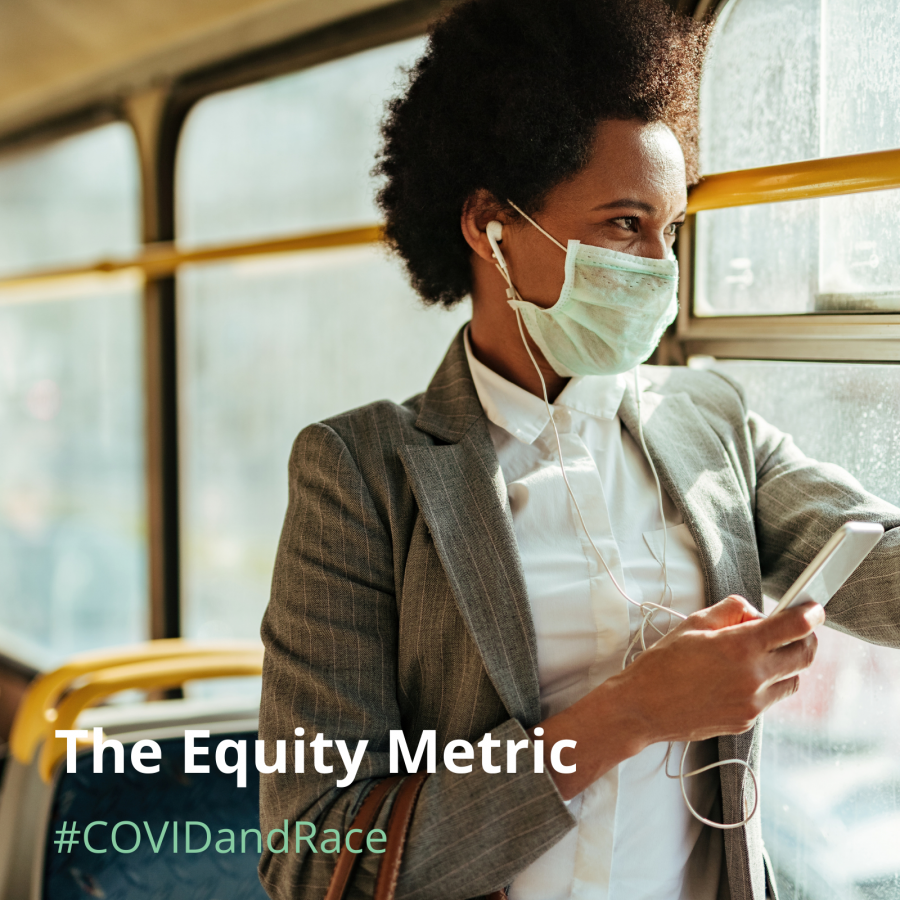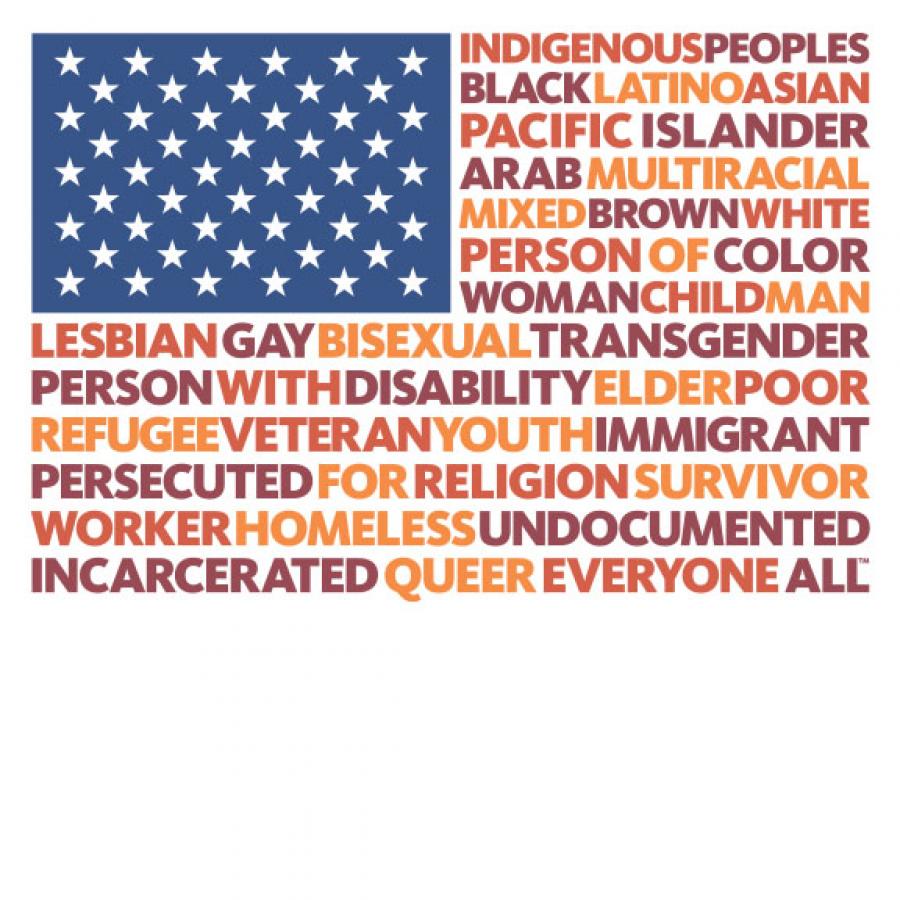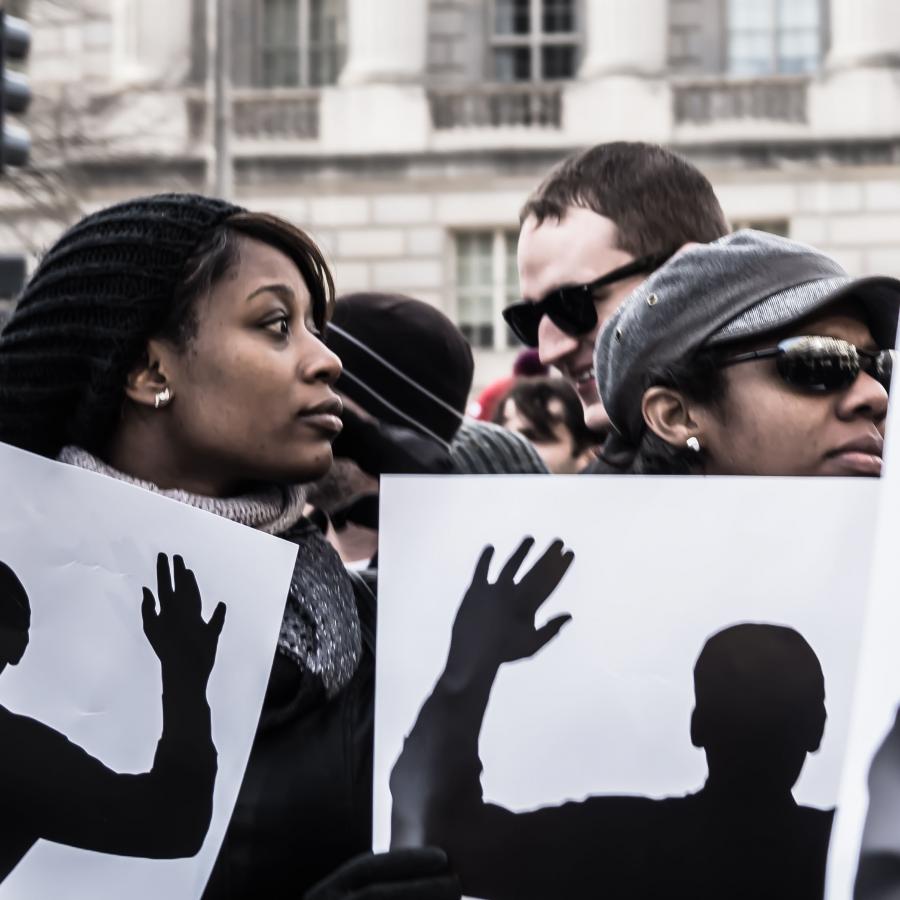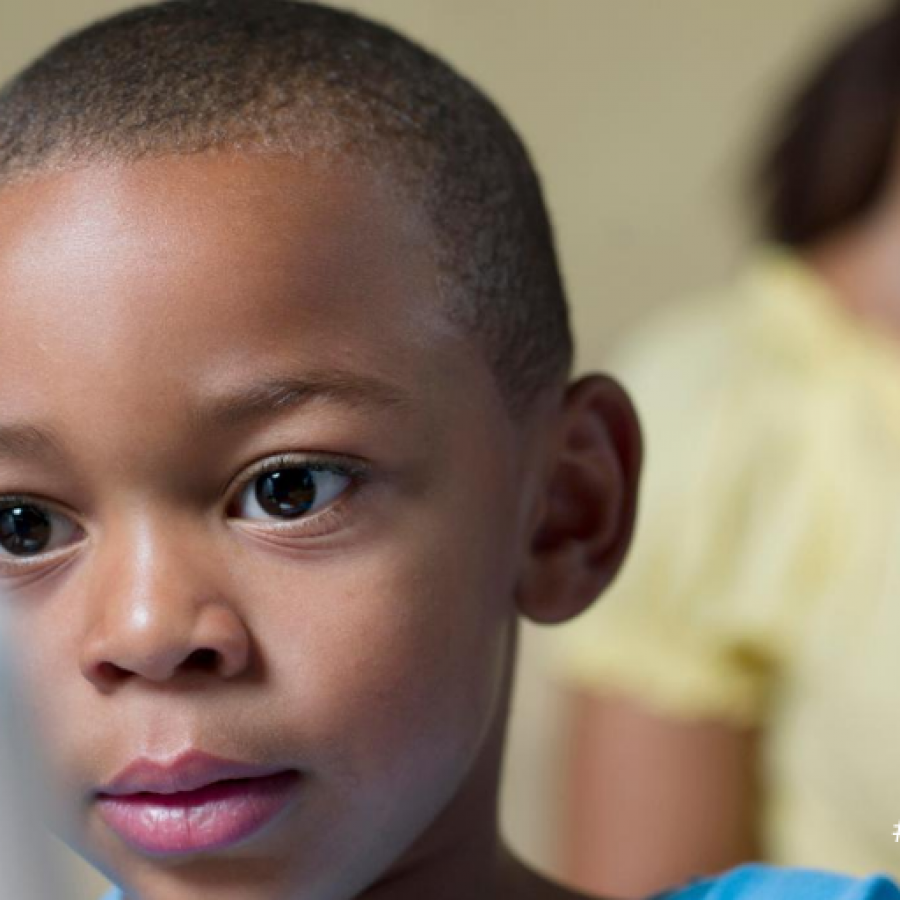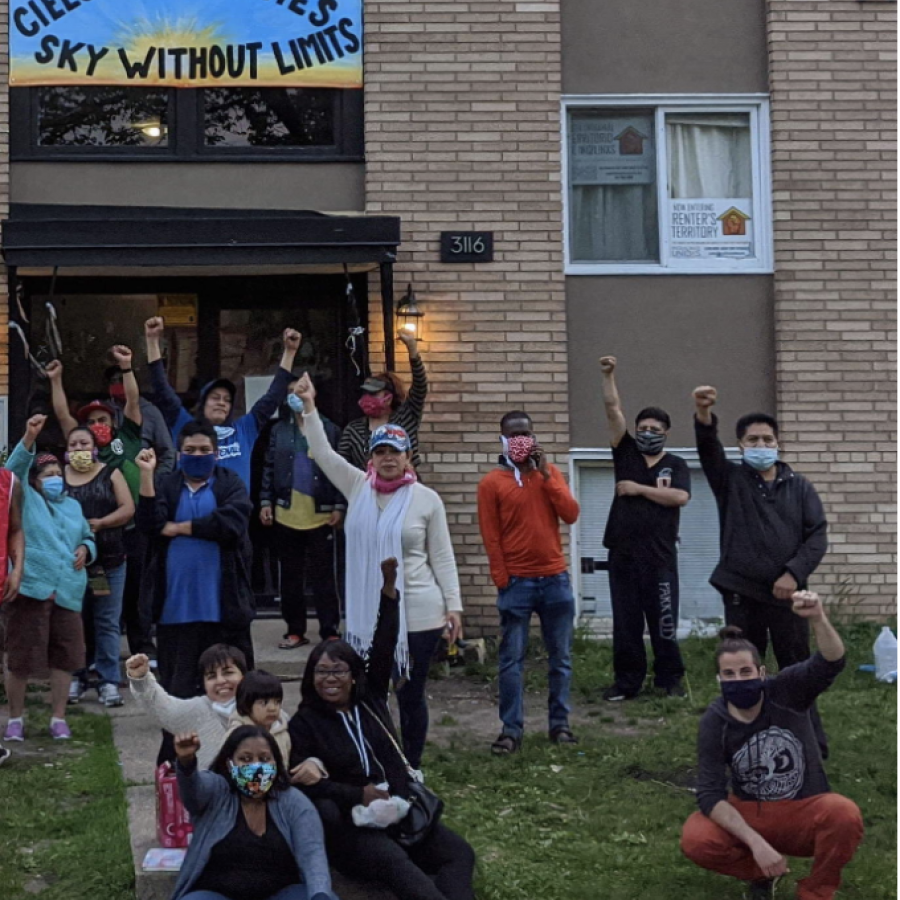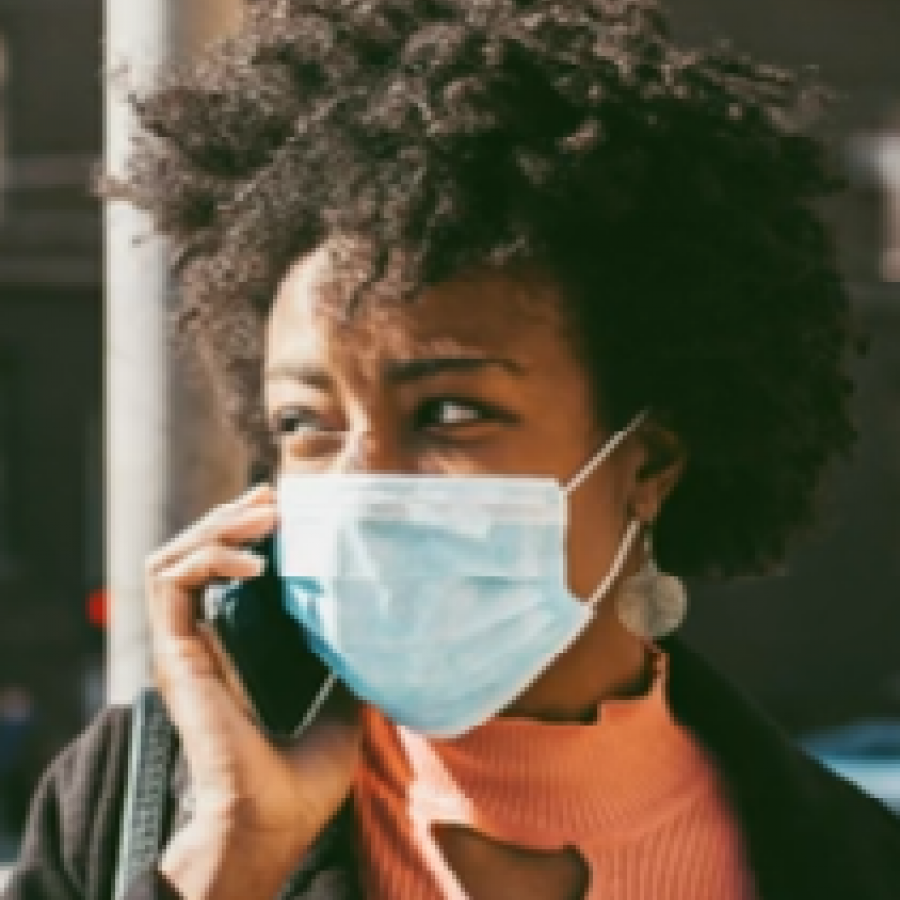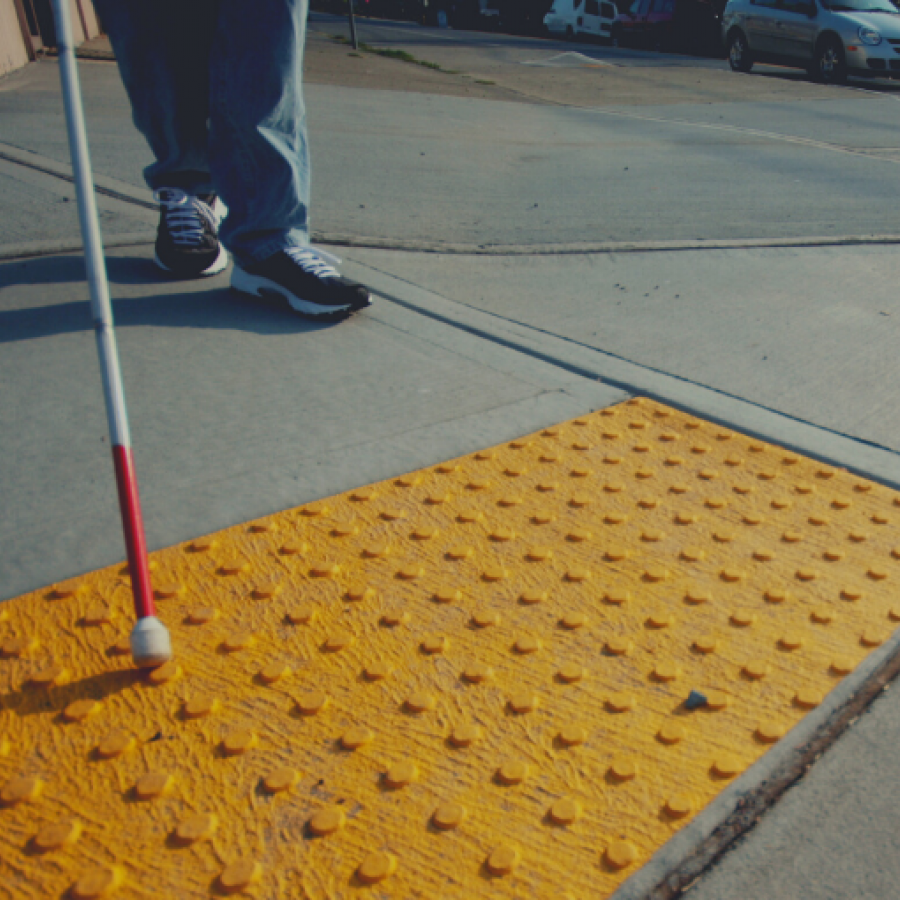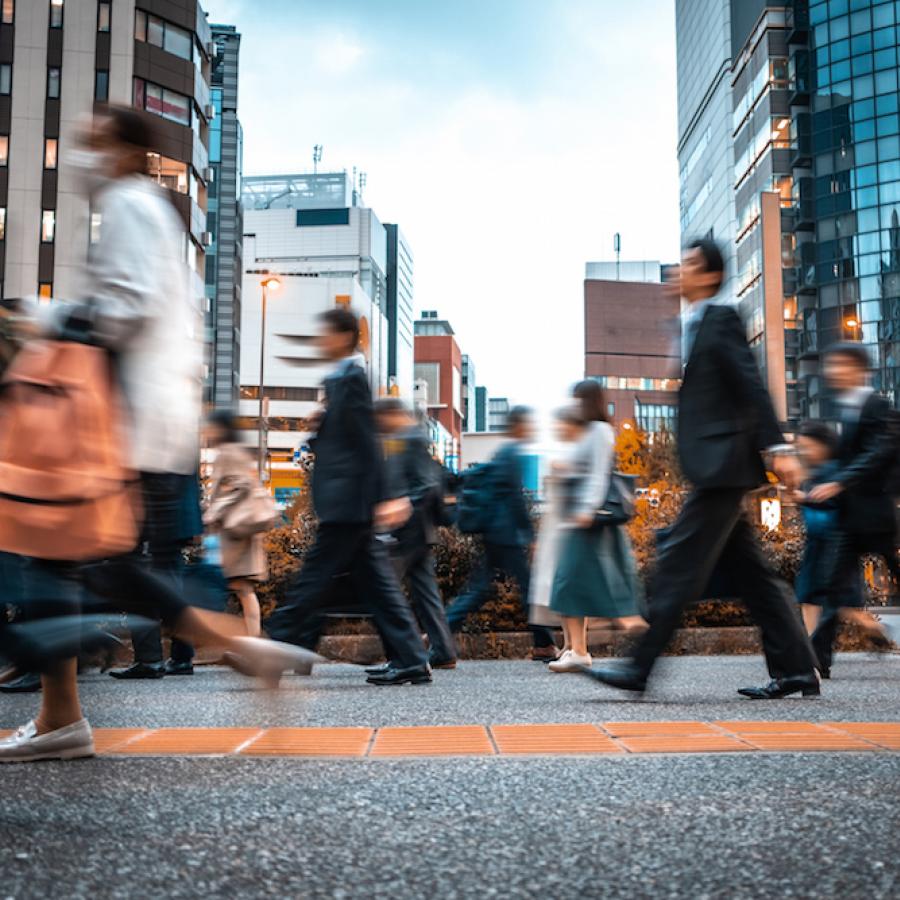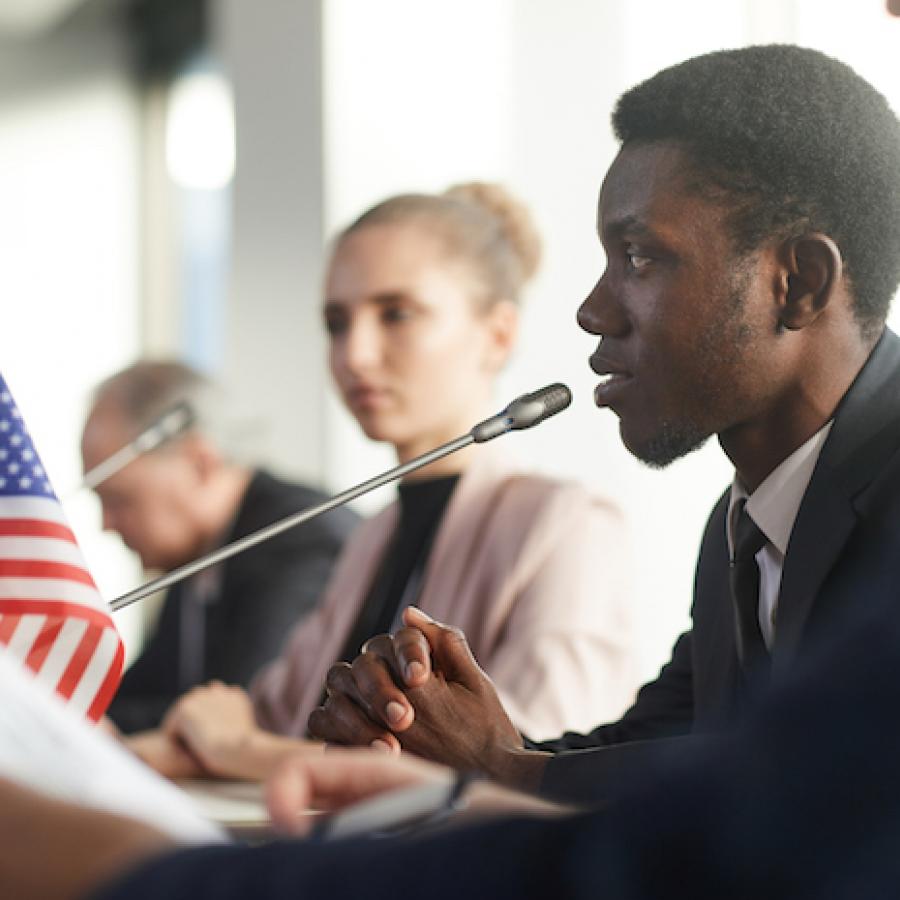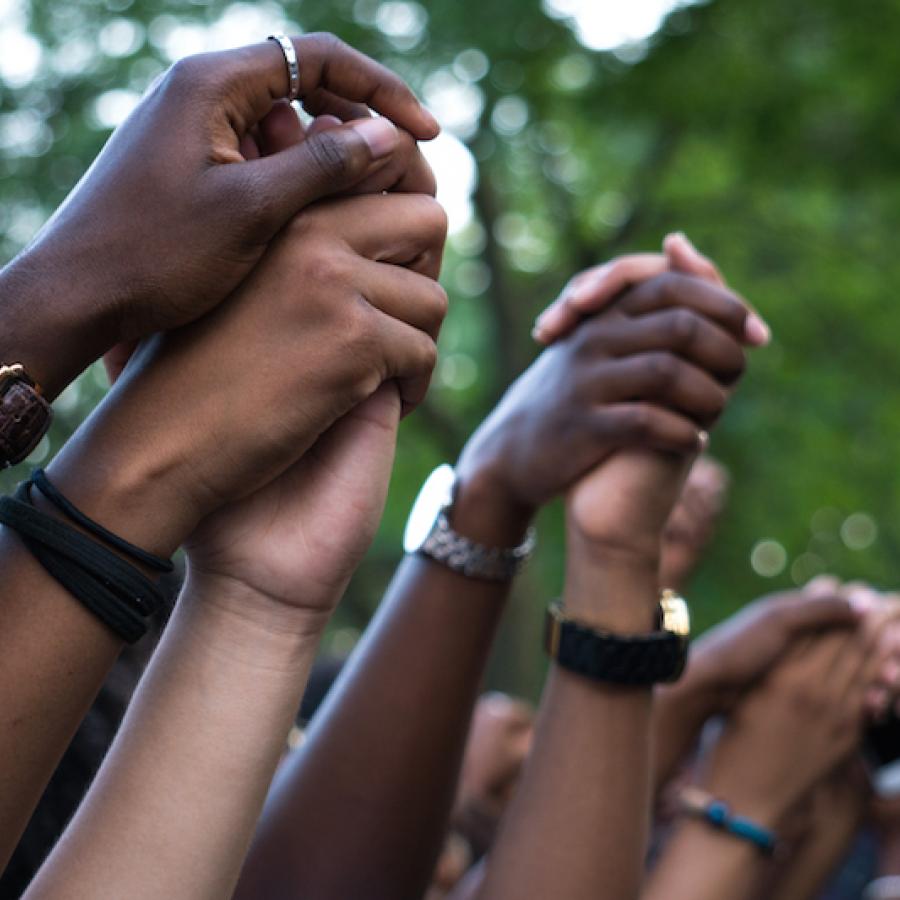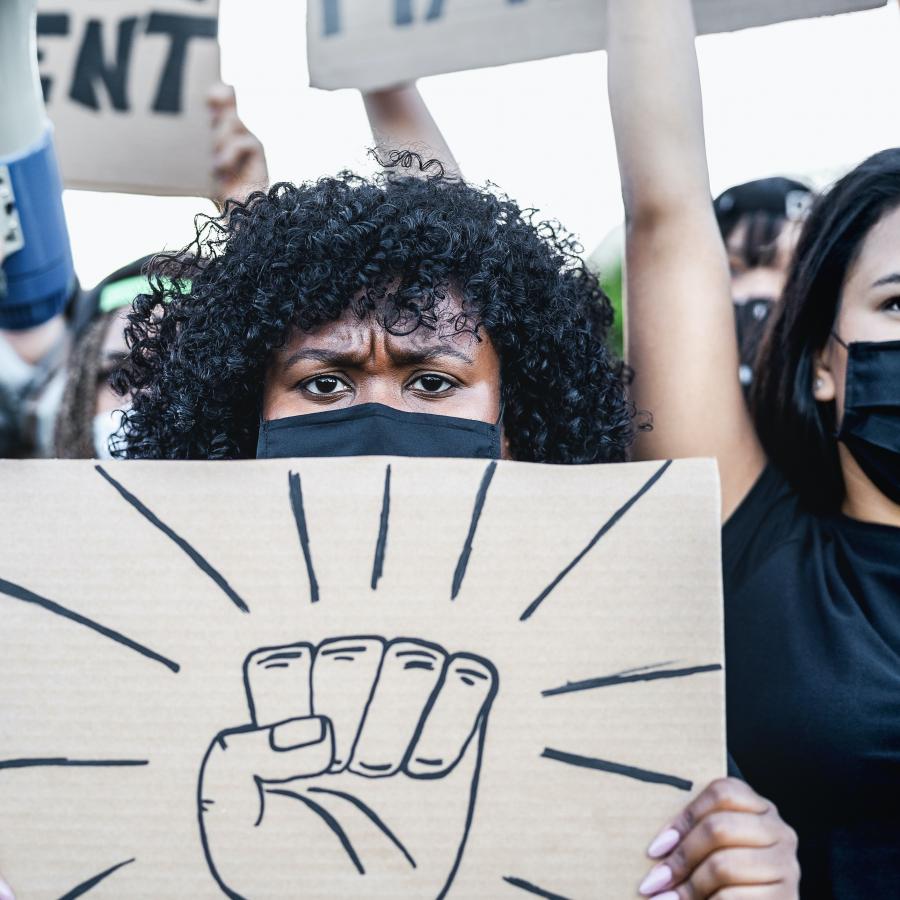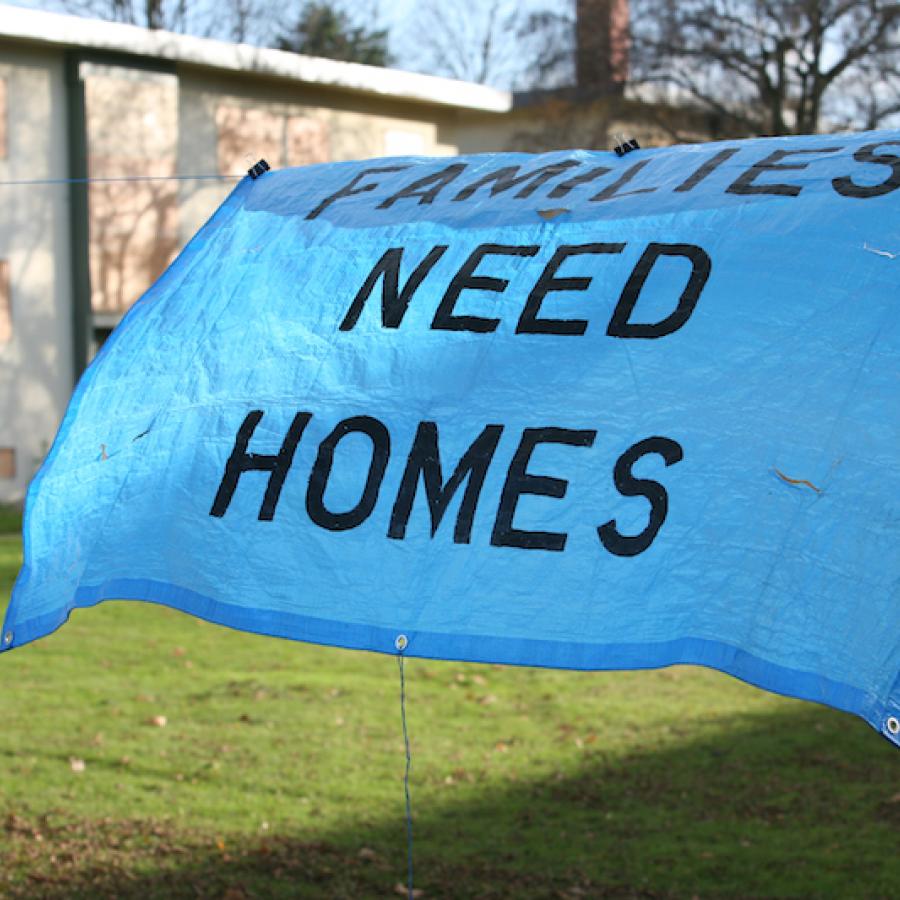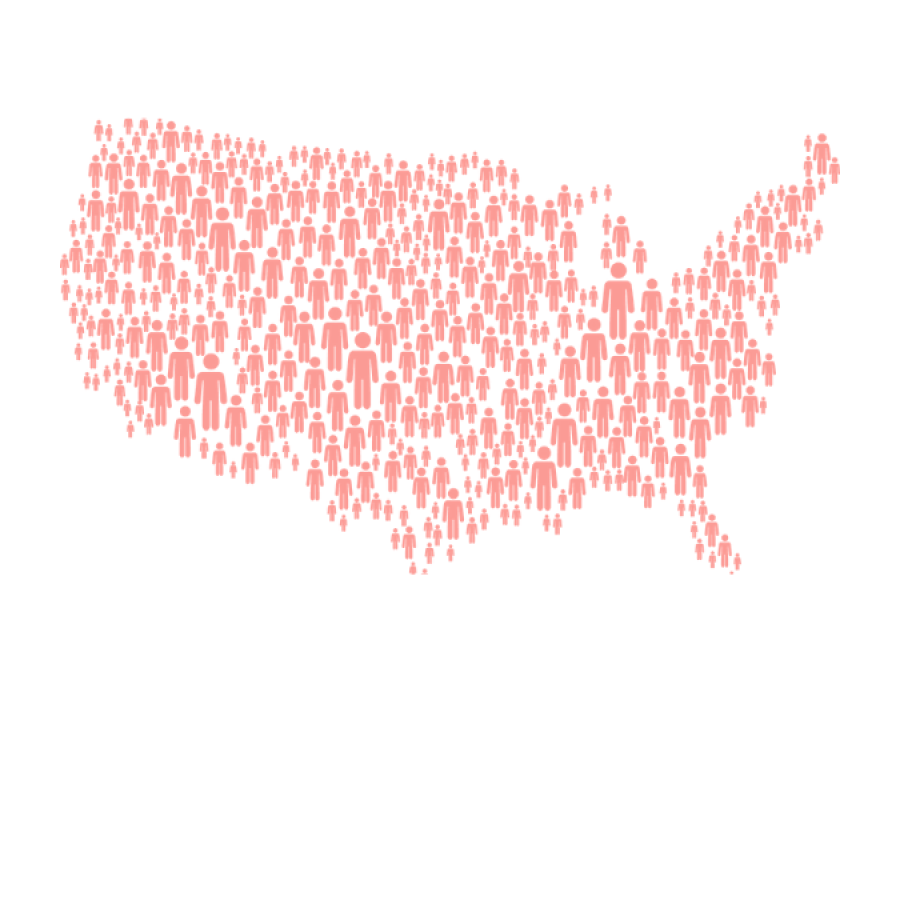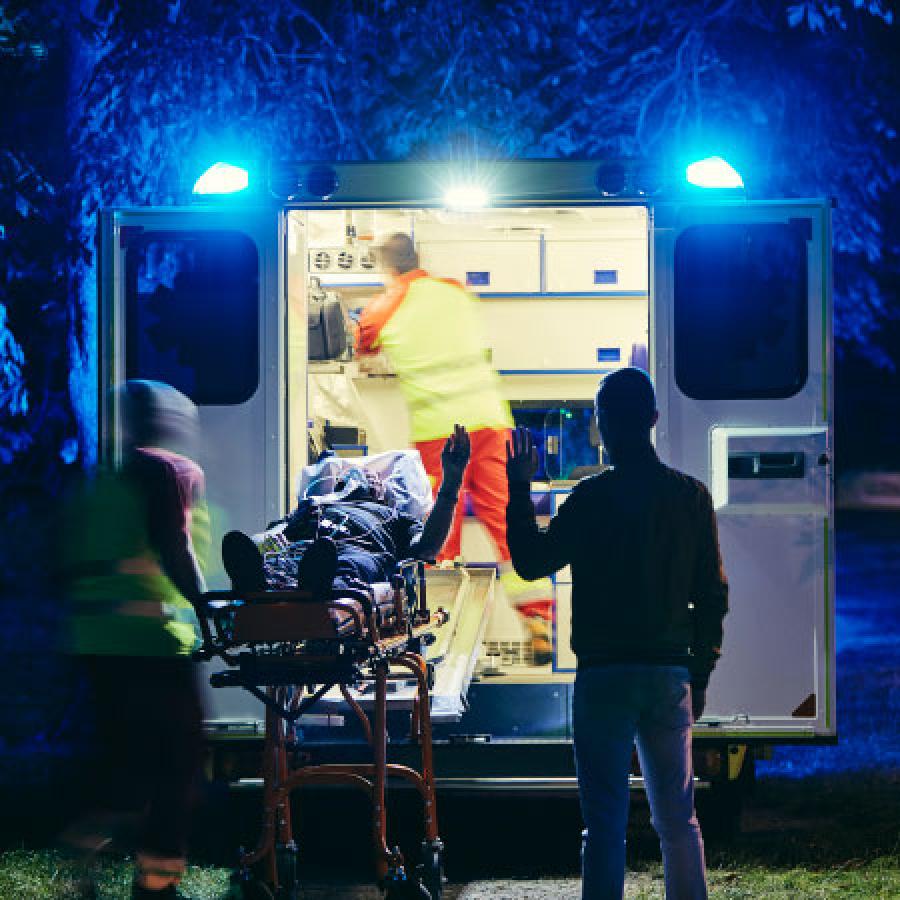Reimagining transportation, lessons learned from the pandemic frontlines, and why Black people are voting as if their lives depend on it, in this week’s Covid, Race, and the Revolution.
Issue No 27. October 21, 2020
Reimagining Transportation
By Axel Santana
Transit systems across the country are in critical condition, as the pandemic devastates public finances and federal CARES Act funding all but runs out. San Francisco is in danger of permanently losing 40 of its 68 bus lines. Residents in Atlanta, Denver, Cincinnati, and several other cities are on the verge of losing access to frequent full-day service. Rural communities such as Little Dixie, Oklahoma, are in danger of having to cut transit service altogether. These challenges pose a significant threat to millions of low-wage and essential workers, who are disproportionately people of color.
Our transportation systems have historically been designed to disenfranchise communities of color. Highways have been constructed directly through low-income neighborhoods, dividing and destroying communities and polluting the air to facilitate the movement of goods and connect affluent White residents to jobs and services. People of color and low-income communities heavily rely on public transit, though systems are underinvested and service is often limited, inconvenient, unaffordable, and unsafe. The coronavirus has exacerbated these challenges and forced America to grapple with a looming transportation crisis of historic proportions.
Rather than working to “return to normal,” decision makers should leverage this moment as an opportunity to reimagine transportation systems — including public transit, roads, walkways, and bike lanes — to work for the most marginalized communities. Inclusive economic recovery depends on investing in sustainable community infrastructure that connects people to jobs, services, their families, and one another. Without these investments, the nation will further marginalize the communities that have always been left behind and the people who have been hardest hit by the virus and the economic fallout.
Around the country, progressive leaders are showing the way toward transportation equity. For example, the National Association of City Transportation Officials granted 10 cities, in partnership with their local community-based organizations, funding to repurpose their streets to create space for recreation and services while meeting current social-distancing requirements. AC Transit in the San Francisco East Bay Area is providing free bus rides for essential workers during the pandemic, and several other cities are adapting and expanding their service to meet new demands.
How can we harness the creativity and innovation of the moment to not only recover, but also propel communities, regions, and the nation toward a more equitable future?
Here are five things government and business leaders should do right now:
1. Invest in affordable transportation options and climate-resilient infrastructure. Meaningful investments in programs such as free and discounted public transit fares, like an initiative in Kansas City, can encourage ridership, decrease traffic congestion, and reduce air pollution, which can, in fact, increase a person’s risk of dying from Covid.
2. Prioritize quality jobs, workforce training, and contracting opportunities in transportation. Investing in programs that allow people of color to train, get hired, and maintain careers in the transportation sector will provide residents with opportunities to restore our shattered economy and improve their communities while earning a living wage.
3. Focus on smart, targeted, and equitable results. When decision makers and advocates use targeted strategies that prioritize our most vulnerable populations and meaningfully embed equity into the work, we will achieve the results we’re aiming for: reduced carbon emissions; cleaner, safer, more affordable and accessible transportation options; climate-resilient transportation infrastructure; and better connected and healthier communities.
4. Empower local residents to be leaders and decision makers in their communities. Fostering leadership within communities will lead to self-sufficiency and more accountability. It also leads to more creative and localized solutions that work for residents. In the 90th Ave redesign in Oakland, for example, the city collaborated with a local community-based organization to repave a busy street to be safer and more accessible to bicyclists and pedestrians.
5. Design and focus on programs that prioritize the safety of communities of color. Instead of focusing on law enforcement and other measures that criminalize people of color, we should prioritize preventive measures such as redesigning streets and transit to increase pedestrian and bicyclist safety.
These principles have always been important to achieving equity in the transportation sector and beyond. The Covid pandemic has only intensified the need to take immediate action to improve our society and create a transportation system that serves everyone. In an op-ed in Roads and Bridges, I describe the importance of this moment.
Axel Santana is a PolicyLink Associate focused on the intersections of transportation and climate policy.
News, Analysis, and Commentary, Curated from Around the Web
Voting is on!
Black Americans are voting in historic numbers and helping to crush records for early voting, the Washington Post reports. The wait to cast a ballot in person has stretched for 10 hours or more in some places, and mail-in ballots have flooded election offices. Black voters consistently say they’re showing up to take an urgent stand for racial justice and respond to the disastrous government handling of the pandemic. “There is no group of Americans who are more vested in this democratic experiment, historically, than the Black person in the United States of America,” pollster Cornell Belcher tells the newspaper. “Black people are literally voting like their lives depend on it.”
Scientific American explains how to avoid Covid while voting. Chief among the recommendations: take advantage of options to vote early, either in person, by mail, or by absentee ballot. Forget the idea that November 3 is Election Day; instead, it’s only the last day of an extended opportunity to vote. Spreading out the number of people participating in the election over weeks, rather than on one day, makes voting safer. Don’t wait.
Covid deaths increase among Latinx people
The Covid death rate increased sharply among Latinx people over the summer, the Centers for Disease Control and Prevention reports. Although the death rate declined slightly among Black people, they still account for an outsized share of coronavirus fatalities. Three of the five counties with the nation’s highest Covid death rates are predominantly Black, according to the Covid Racial Data Tracking Project.
Covid cases and hospitalizations are climbing almost everywhere in the US, an ominous new pattern in the crisis. Until now, surges have been regional, in the Northeast last spring, followed by spikes in the Sunbelt and then the Midwest.
But even as the pandemic accelerates, public trust in a potential Covid vaccine is eroding, especially among Black Americans. In a new survey by Stat and The Harris Poll, 58 percent of respondents said they would get a vaccine as soon as one is available, compared with 69 percent in mid-August. Only 43 percent of Black respondents said they would get vaccinated as soon as possible, down from 65 percent two months ago. The declines reflect widespread concern that the approval process for a vaccine has been politicized in the run-up to the election.
Systemic racism compounds vulnerability of elders
It’s well known that people over 65 account for most confirmed Covid deaths — nearly four out of five, by the latest CDC count — but that doesn’t begin to measure the full toll among seniors, especially those of color. Deaths from dementia were 20 percent higher over the summer than in the same period last year, geriatrician Laurie Archbald-Pannone writes in The Conversation. Columbia University neuropsychologist Miguel Rentería tells Quartz that structural racism has played a role: Black and Latinx populations are more likely to develop dementia than White people and tend to be diagnosed later, worsening outcomes.
Nursing homes and assisted living facilities have been ravaged by the virus, which makes accurate data on outbreaks essential. But Mississippi’s response to the devastation is to stop publicly reporting the number of cases and deaths in long-term care facilities, writes the Covid Tracking Project. Residents of these facilities make up less than 1 percent of the nation’s population but 41 percent of confirmed Covid deaths. That’s 85,129 people as of October 15. Florida and Texas account for a quarter of those deaths.
At the other end of the age spectrum...
Community college enrollment, the entry point to higher education for most Black and Latinx, and low-income students, usually increases when the economy sours. But this fall, freshman enrollment is down a staggering 22.7 percent, the New York Times reports. This may have lifetime repercussions for young people of color and long-term implications for economic equity and employment access throughout the nation.
Public health experts are bracing for a sharp increase in childhood obesity this year, reversing the hard-won progress of the past decade, USA Today reports. The pandemic recession, along with shuttered schools, suspended sports, and park restrictions, have limited access to healthy food and opportunities for physical activity, especially for children in households with incomes below the poverty level. Even before Covid, these children were more than twice as likely to suffer from obesity as the most affluent kids.
In good news, nearly three weeks after New York City reopened its 1,800 public schools amid fears that they would become super-spreader sites, very few infections have surfaced, the Times writes. Out of 15,111 staff members and students tested randomly the first week, only 18 positive results turned up. The city has gotten back results for 10,676. Subsequent testing of 3,300 people found only four coronavirus cases.
Lessons learned, eight months in
Eight months after the coronavirus virus was first detected in the US, equity advocates, scholars, and public health experts are learning important lessons about what works to control the spread, ease the heavy burden on people of color, and move toward an equitable recovery. One takeaway: emergency paid sick leave helped flatten the curve. A study in Health Affairs finds that states that gained access to up to two weeks of paid sick leave through the bipartisan Families First Coronavirus Response Act recorded 400 fewer Covid cases per day.
Two Baltimore physicians on the frontline of Covid care describe what they’ve learned about effective pandemic control in the undocumented Latinx community. “Fundamental changes are needed, Kathleen Page and Alejandra Flores-Miller write in the New England Journal of Medicine. Immigration reform would provide critical relief, but other, more politically tenable steps, can be taken now. These include cash benefits for all who need them, regardless of immigration status; occupational protections, higher wages, and access to health care for essential workers; and hiring community members to work with health-care systems in addressing disparities.
Rural hospitals, which were severely strained well before they were flooded with Covid patients, are finding innovative ways to respond, researchers Tanisa Adimu and Amanda Phillips Martinez write in The Conversation. While the pandemic keeps people at home, often in isolated communities, rural health collaboratives are developing strategies to monitor health, provide mental health and addiction services, and fix persistent connectivity and technological problems.
Recover and reset
The Black Woman’s Guide to the Covid-19 Economy, by Jocelyn Harmon and Solana Rice, urges women to come together to advocate for bold new economic policies, including three guarantees: to income, wealth, and housing. Recognizing that “individual choices won’t rectify the oppression built into our society,” the authors outline nine personal actions to help women get through the crisis, including apply for unemployment insurance, reskill or upskill, renegotiate expenses, create a sharing economy, and plan for the future.
In an interview with a new email newsletter, Reset Work, Angela Glover Blackwell explains how companies can change their practices to navigate the new realities of the workplace and be fairer and more inclusive in the long term. Focusing on race is the responsibility of business, not just government, she says. The CEO should also be the equity, diversity, and inclusion officer. And workers must have predictable schedules and a say in how to reopen safely.
The future of housing
Two new reports from PolicyLink, focused on Philadelphia and California, examine how decades of racially biased policymaking have contributed to the pandemic housing crisis and outline an agenda for a housing future that increases stability and security for low-income households and communities of color, eases the threat of displacement, expands affordable and community-controlled housing, and increases access to neighborhoods of opportunity. To learn more, join the PolicyLink webinar, Facing History to Advance Housing Justice, on October 28.
PolicyLink draws from articles, videos, interviews, and other sources across platforms, as well as from our network of equity leaders and activists, to bring you the latest information about COVID-19 and race. We offer this resource to:
- Provide easy access to information on the dual health and economic crises facing people of color;
- Put and keep racial equity at the center of our collective understanding of the pandemic and the policies needed for relief and recovery; and
- Lift up useful data and insights that can fuel equity advocacy and campaigns.
Please share with your networks and send your ideas and feedback. And follow us on Twitter, LinkedIn, Facebook and Instagram. #COVIDandRace
We hope you find the COVID-19 and Race Series an important tool for keeping up with news about the virus and its impact on communities we serve. As a non-profit organization, PolicyLink is honored to provide resources to support the needs of our nation's 100 million economically insecure individuals. Generous partners like you make our work possible.
Michael McAfee and Angela Glover Blackwell are grateful for the contributions of Fran Smith, Milly Hawk Daniel, Rachel Gichinga, Glenda Johnson, Jennifer Pinto, Heather Tamir, Ana Louie, Janet Dickerson, and Mark Jones to produce the COVID-19 & Race commentary.
